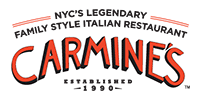Radical/Networks
October 24-25, 2015
Integrated Digital Media
MAGNET NYU Poly, Brooklyn, NY
Erica Kermani

Erica Kermani is an artist, educator, and community organizer based in Brooklyn, NYC. As Director of Community Engagement at Eyebeam, Erica develops and produces project-based public programming around social justice, arts, and technology. Her role as an organizer, educator and arts administrator has been informed by over fifteen years of experience at organizations including BRIC Arts Media, Arts High Foundation, Media Arts Center San Diego, Center on Policy Initiatives, and Q-Team. Erica's arts practice involves traditional textile fabrication and new media installation informed by queer identity, subversion, feminism, and Iranian culture. Erica received a Bachelor’s of the Arts in both Visual Arts (Media-Computing) and Political Science at the University of California, San Diego.
Presenting with Miki Foster
The Queer Red Phone: Designing Interfaces and Community Accountability Networks Through Mesh
The idea of a batphone - the red phone that Commissioner Gordon had a secure line with Batman - is that the user has a secure connection used in critical situations or emergencies. One of the interesting possibilities of a closed network coupled with a bit of cryptography and an alert system is that we can create a means for designing a user experience that is easy to access, can serve multiple critical functions within our communities and is built/maintained from the ground up by members of the community who are committed to the privacy and anonymity of all users.
Let’s say that we wanted to distribute the responsibility of responding to a critical situation or emergency to not just one person or a bunch of people. We can send out the equivalent of a bat signal - we can encode a message that gives more specifics that allows respondents to prepare for the situation and engage with each other (if needed) in order to strategize. The question is can we build a network that uses grassroots organizing, trust and accountability structures to create a digital framework/community that addresses emergencies, critical situations, and distributes care and resources within our communities without (or at least minimizing) surveillance? What would this network enable us to do and how would we encourage others to use it without compromising its integrity?
In this workshop we will imagine and design as a community of queers a network and community. Participants need not know anything about mesh networks in order to attend but rather come with a willingness/openness to think about both the social and technical limitations/possibilities of creating a community.
Materials: paper, post-its, markers, pens (no tech materials)





